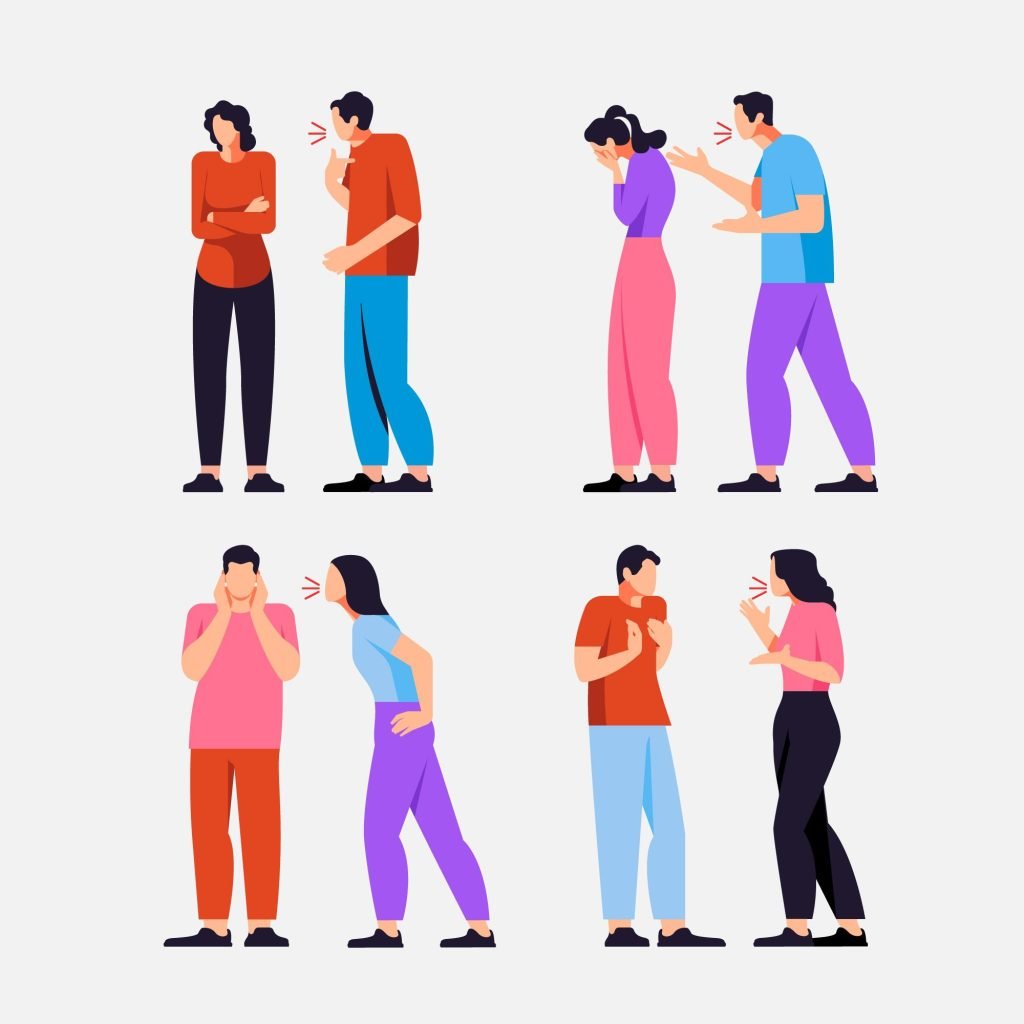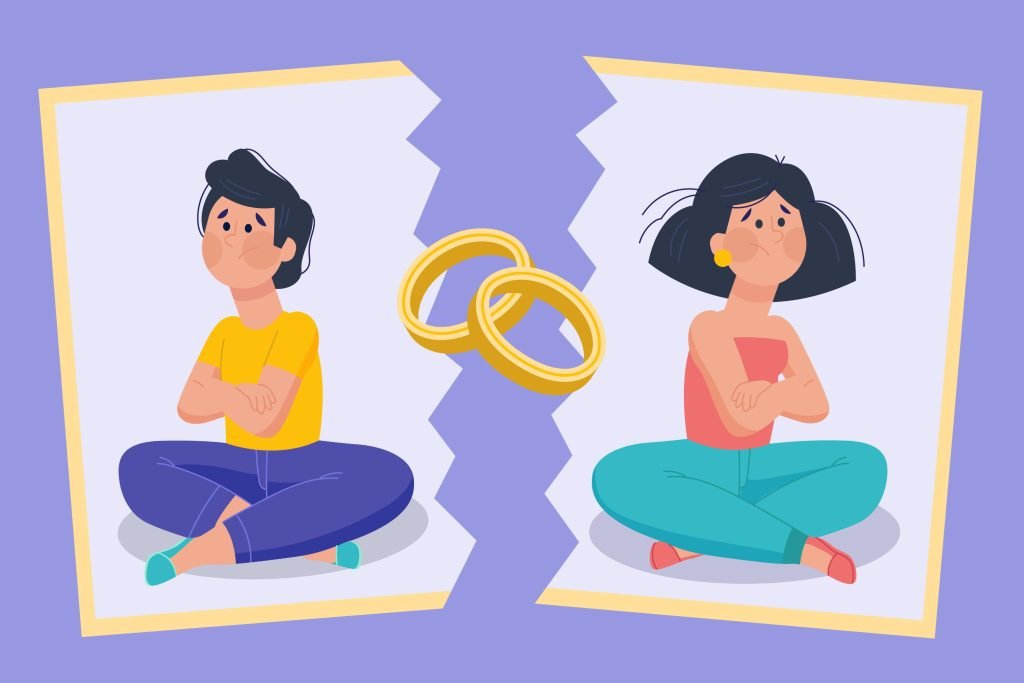Are you in a narcissistic relationship, or do you want to know the signs and patterns of a narcissistic relationship? In this blog post, we will explore 21 stages of a narcissistic relationship, the patterns of a narcissistic relationship, and how to identify them. With that much said, let’s dive into the most searched relationship on Google: a narcissistic relationship!
What is a Narcissistic Relationship?

Every relationship has its uniqueness and boundaries, which make it different from the others. Narcissistic personality disorder is when a person possesses this and only thinks about themselves. They have a high level of self-esteem and almost no empathy for others.
A narcissistic relationship may start with love, spending time with each other, and going out on dates, but the same person begins to devalue their partner as time passes. Moreover, one can go through immense emotional trauma in a narcissistic relationship.
In a narcissistic relationship, one partner (with NPD) typically exhibits these narcissistic traits, while the other partner (the victim) is often manipulated, controlled, and emotionally abused. A person with a selfish personality disorder can do anything for their high self-esteem and satisfaction.
Recognize the Red Flags: Signs that You Are in a Narcissistic Relationship

A narcissistic relationship can become a lifelong trauma for the victim, especially if they can’t do anything about it. But we are here to tell you the common signs of a narcissistic relationship.
- A person has a grandiose sense of self-importance.
- A person is preoccupied with fantasies of unlimited success, power, brilliance, and wealth.
- A person thinks they are unique and often associates them with high-status people.
- They also require excessive admiration.
- They have a sense of entitlement.
- They are interpersonally exploitive (taking advantage of others).
- They usually lack empathy.
- They are envious of others and think others are envious of them.
- They also show arrogant behavior.
Above all signs are the most common red flags of a narcissistic relationship; if you find multiple signs in your partner, you may be in a narcissistic relationship.
Narcissistic Relationship Pattern

A narcissistic relationship often involves the same pattern and cycle. Moreover, a person with narcissistic personality disorder can ride from love and excitement to the depths. Here are the patterns of a narcissistic relationship:
- Idealization: A selfish person often idealizes their partner, showering them with love, attention, and compliments to gain their trust and admiration.
- Devaluation: Over time, a selfish person begins to devalue their partner, criticizing or demeaning them. It may also include emotional abuse, including verbal insults and manipulation.
- Gaslighting: Moreover, in this phase, a narcissist denies or distorts reality, making the victim doubt their perceptions and sanity.
- Isolation: Narcissists may isolate their partners from their friends and family to control them.
- Discard: Narcissists may abruptly end the relationship and discard their partner when the partner no longer serves their needs.
A narcissist’s actions cannot be hidden; we can see their behavior and activity patterns with our observation. Additionally, if you visit or observe some patterns in your pattern, consult with the relationship advisor or seek help from friends and family.
21 Stages of a Narcissistic Relationship

A narcissist person may not follow rigid patterns or stages, but here are 21 Stages of a Narcissistic Relationship.
- Idealization: The narcissist gives their partner lots of love, care, and compliments, making them feel like they’ve found their perfect match.
- Love bombing: Love bombing is when a narcissist shows their partner much love, gives them gifts, and does other big things to keep control.
- Devaluation: The narcissist starts to attack, insult, and put down their partner, which hurts their sense of self-worth.
- Gaslighting: Gaslighting is when a narcissist changes their partner’s view of reality to make them wonder if they are crazy.
- Isolation: The narcissist also makes it hard for their partner to talk to friends and family, cutting them off from support networks.
- Control: The narcissist controls every part of their partner’s life, telling them what to do and how to act.
- Keeping back care: A narcissist will pull away love and care to punish and control others.
- Triangulation: Triangulation is when a narcissist brings in a third person to make the relationship jealous and insecure.
- Intermittent Reinforcement: Moreover, the narcissist goes back and forth between loving and hurting people, which causes misunderstanding and emotional upheaval.
- Projection: The narcissist also put their flaws and insecurity on their partner, making them feel like they are to blame for the problems in the relationship.
- Guilt-Tripping: The narcissist uses guilt to control their partner and get them to do what they want.
- False apologies: Hoovering is when a narcissist tries to get their ex-partner back by saying they will change and love them.
- False Apologies: The narcissist makes up excuses to get their partner to stay with them.
- Smear Campaign: The narcissist also lies and spreads rumors about their partner to hurt their image.
- Abuse of money: The narcissist is in charge of the capital, so their partner has to count on them.
- Emotional blackmail: A narcissist uses threats and emotional trickery to get what they want.
- Discard: The narcissist also ends the relationship quickly, hurting and confusing the other person.
- Reactive abuse: When a partner is pushed to their limit, they may respond with anger or aggression, which the narcissist uses as more ammo.
- Post-Discard Manipulation: Even after the relationship is over, the narcissist still acts manipulatively.
- Recovery: After a stressful event, the partner starts healing and rebuilding their life.
- Breaking Free: The partner also finds the strength to break out of the circle of narcissism and look for a better future.
Steps to Take in a Narcissistic Relationship
If you’re in a relationship with a narcissist, it’s important to put your health first and take steps to get better. Here are some ideas to think about:

- Understand the Signs of Abuse: Recognize the wrong relationships and know it’s not your fault.
- Put Limits in Place: Also, set clear limits and ask for what you want directly.
- Ask for Help: Reach out to friends, family, or support groups you can trust and who can also help you.
- Get an education: Find out more about narcissistic personality disorder and how it affects the way people interact with each other.
- Keep track of the abuse: Moreover, Keep track of the selfish behaviors, as proof may be needed in court or therapy.
- Think about therapy. Get help from a professional therapist who deals with narcissistic abuse.
- Make a Plan to Leave: If you decide to leave the relationship, also make a safety plan and, if necessary, talk to a lawyer.
- Take care of yourself. However, focus on self-care activities that help you heal, like therapy, meditation, writing in a notebook, or hobbies.
Conclusion:
In conclusion, narcissist relationships are marked by the narcissist’s high opinion of themselves, manipulative tactics, and emotional abuse. Additionally, recognizing the red flags, which include exploitation, a lack of empathy, and a sense of entitlement, is the first step in getting help or making an educated decision about the relationship.
The typical pattern of 21 stages of a narcissistic relationship including of idealization, devaluation, gaslighting, isolation, and abandonment. This also makes the victim feel like they are on an emotional roller coaster. Even though not all relationships go through these exact steps, being aware of them can help people trying to break up.
The 21 narcissist relationship stages, from idealization to recovery, give you a better idea of the relationship that many victims take. Moreover, for healing and recovering independence, it’s important to set limits, get help, and plan for the future. Additionally, Remember that it is possible to break out of the cycle of a narcissistic relationship and move toward a healthier, more satisfying life with the right help and drive.
Frequently Asked Questions:
Q1. What is a narcissistic relationship?
Basically, a narcissistic relationship may start with love, spending time with each other, and going out on dates, but the same person begins to devalue their partner as time passes.
Q2. What are the signs of a narcissistic relationship?
Here are the signs of a narcissistic relationship.
- They require excessive admiration.
- They also have a sense of entitlement.
- They are interpersonally exploitive (taking advantage of others).
- They usually lack empathy.
- They are envious of others and think others are envious of them.
- They also show arrogant behavior.
Q3. What are the patterns of narcissist relationships?
The pattern of a narcissist relationship is idealization, devaluation, gaslighting, isolation, and discard. Remember, these are also the most common traits of a narcissistic relationship.
Q4. Are all narcissist relationships the same?
No, not all narcissist relationships are the same. Some patterns and features are typical of narcissistic relationships; however, each relationship’s intensity, length, and behaviors can differ. Consequently, it’s important to recognize that while certain traits may be common, the specific dynamics of each relationship can vary significantly.
Q5. What steps should I take in a narcissistic relationship?
It is common to be in a relationship with the NPD patient. But, remember to take these steps if you feel uncomfortable with them.
- Understand the signs of abuse.
- Put a limit in place.
- Get an education.
- Make a plan to leave.
- Take care of yourself.







